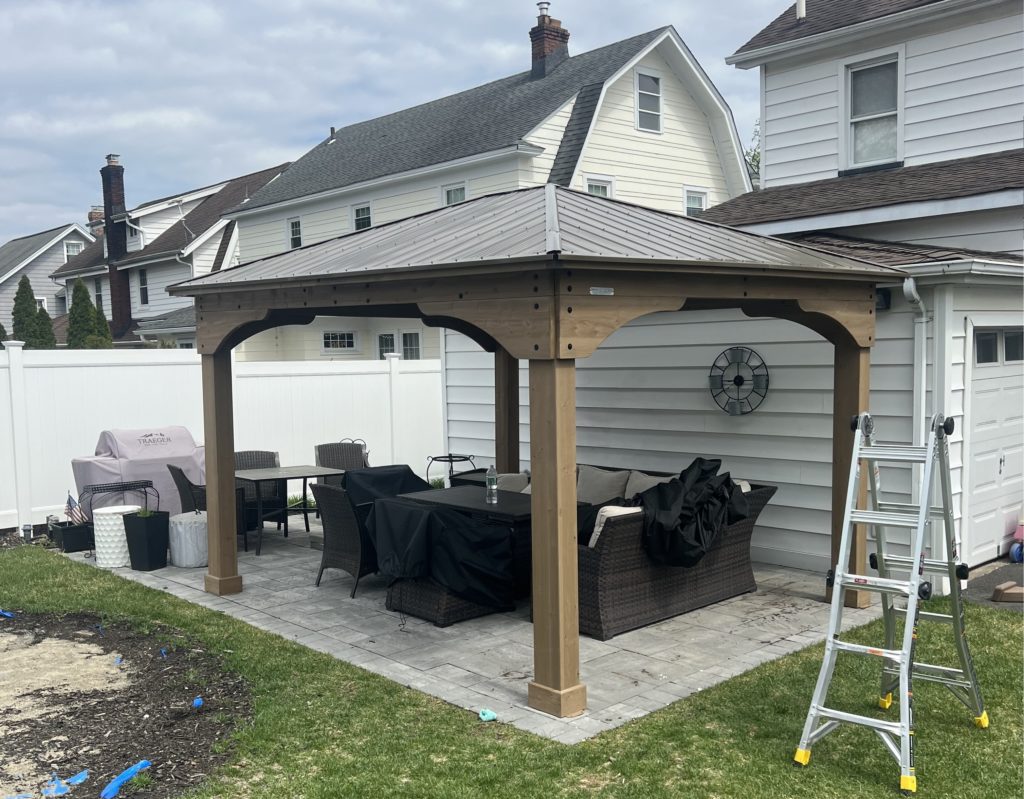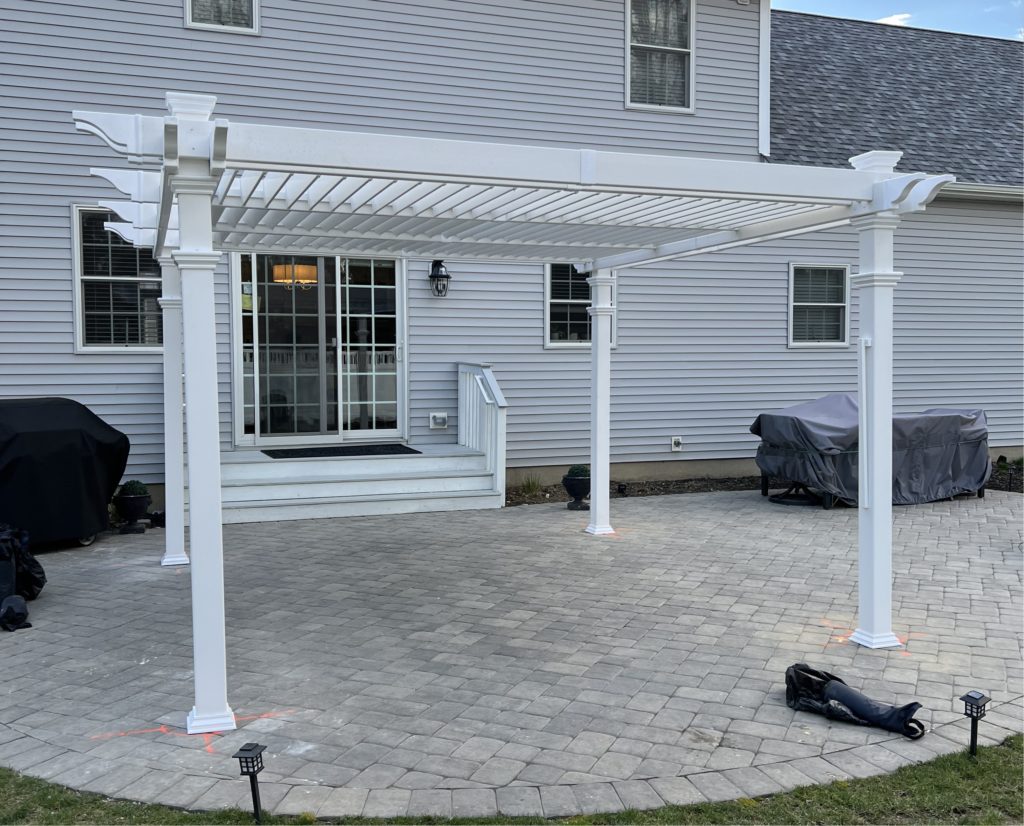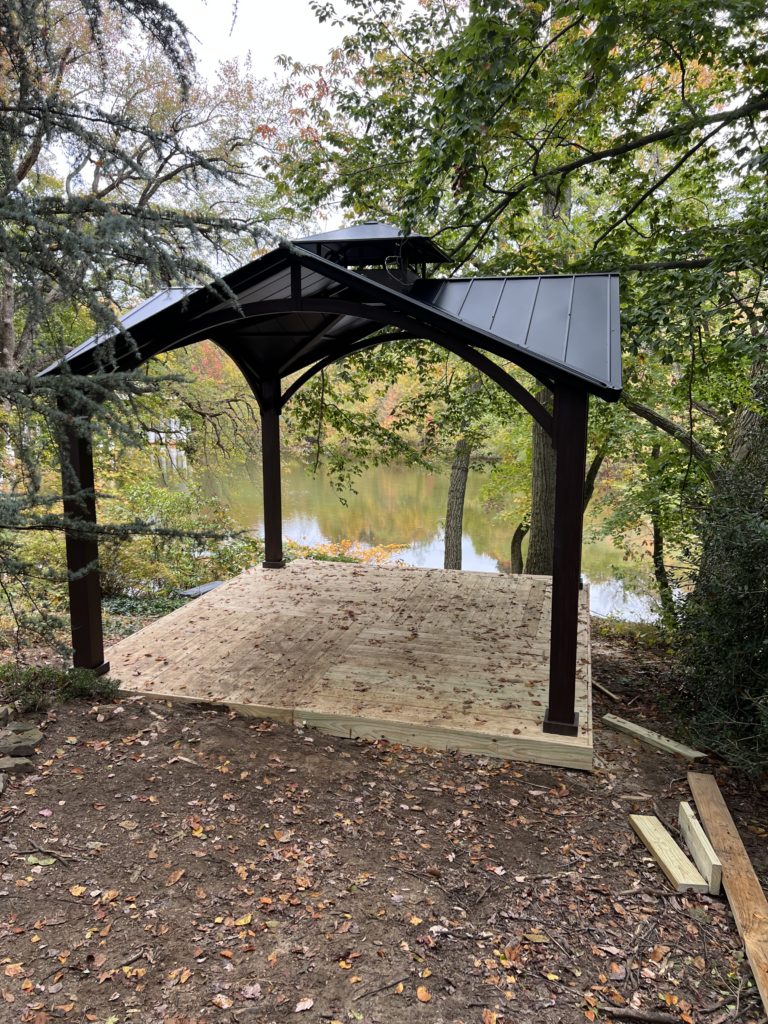If you are looking to improve the comfort and energy efficiency of your home, installing a ceiling fan is a great investment. Whether you need a new fan installed, an old one replaced, or a malfunctioning fan repaired, our team of experts in Montvale, NJ is here to help.
OUR CONTACT
Email Support:
info@gazebo-installation.com
Ask your question:
info@gazebo-installation.com
Some of Our Portfolio Gazebo and Pergola Assembly Projects



At our company, we understand the importance of a properly functioning ceiling fan. Not only does it help circulate the air and maintain a comfortable temperature, but it can also reduce your reliance on air conditioning or heating systems, resulting in lower energy bills. With years of experience in the industry, our technicians have the skills and knowledge to handle any ceiling fan installation, replacement, or repair project.
When it comes to installing a ceiling fan, it is crucial to ensure that it is safely and securely mounted to the ceiling. Our team will carefully assess your space, taking into consideration factors such as the height of the ceiling, the size of the room, and the electrical wiring. We will then expertly install the fan, ensuring that it operates efficiently and looks aesthetically pleasing.
Ceiling Fan Installation: 5 Key Considerations for Montvale NJ Residents
Installing a ceiling fan can greatly enhance the comfort and functionality of any space, including homes in Montvale, NJ. Whether you’re replacing an old fan or installing one for the first time, there are several key considerations to keep in mind. Taking these factors into account will not only ensure a successful installation but also help you choose the right fan for your specific needs.
1. Ceiling height: Before embarking on a ceiling fan installation, measure the height of your ceiling. For optimal air movement and safety, the fan blades should be at least 7 feet above the floor. If you have a low ceiling, consider purchasing a hugger or flush mount fan, specifically designed for compact spaces. Higher ceilings may require the use of extension rods to maintain proper clearance.
2. Room size: The size of the room will influence the size of the fan you should choose. Smaller rooms, such as bedrooms or offices, typically require fans with a blade span of 42-48 inches. Larger rooms, such as living rooms or dining areas, can accommodate fans with a blade span of 52 inches or more for optimal air circulation.
- 3. Energy efficiency: Investing in an energy-efficient ceiling fan can help you save on your energy bills. Look for fans with the ENERGY STAR label, which indicates that they meet strict efficiency guidelines set by the US Environmental Protection Agency. Additionally, consider fans with built-in LED lights, as they consume less energy and last longer than traditional incandescent bulbs.
- 4. Noise level: Noisy fans can be disruptive and annoying, especially in bedrooms or study areas. When choosing a ceiling fan, look for models with DC motors, as they operate quietly and efficiently. Additionally, consider fans with adjustable speed settings, allowing you to control the airflow and noise level.
- 5. Style and design: A ceiling fan is not only a functional addition to a room but also a decorative element. Consider the overall style and design of your space when choosing a fan. From traditional to contemporary, there are countless options available to complement your existing décor. Additionally, consider the finish, whether it’s brushed nickel, bronze, or white, to ensure it matches other fixtures in the room.
By taking these five key considerations into account, Montvale NJ residents can ensure a successful and satisfying ceiling fan installation. Whether you prefer a modern, energy-efficient fan or a classic, stylish option, there is a wide variety of choices available to suit every taste and need.
Choosing the Right Fan for Your Space
Installing a ceiling fan is a great way to improve comfort and energy efficiency in your home or office. However, with so many options available, it can be overwhelming to choose the right fan for your space. Taking into consideration factors such as the size of the room, ceiling height, and your personal preferences will help you make an informed decision. Here are some tips to help you choose the perfect ceiling fan for your needs:
Consider the Size of the Room: The first step in choosing a ceiling fan is to determine the size of the room where it will be installed. The size of the fan should be proportionate to the size of the room. For small rooms up to 100 square feet, a fan with a blade span of 36 inches is usually sufficient. Medium-sized rooms up to 225 square feet may require a fan with a blade span of 42-44 inches. Large rooms over 225 square feet may need a fan with a blade span of 52 inches or more.
Check the Ceiling Height: Another important factor to consider is the ceiling height. For ceilings lower than 8 feet, flush mount or low-profile fans are ideal. These fans are mounted directly to the ceiling, allowing for maximum head clearance. If you have higher ceilings, you can opt for a fan with a downrod, which will lower the fan and ensure optimal air circulation.
Consider Your Personal Preferences: Lastly, consider your personal preferences and the overall style and décor of the room. Ceiling fans come in a variety of styles, from traditional to modern, and in different finishes. Choose a fan that complements the aesthetic of your space and enhances its overall look and feel.
By taking these factors into consideration, you can choose the right ceiling fan that will provide optimal comfort and energy efficiency in your home or office.
Understanding the Electrical Requirements
The installation, replacement, or repair of a ceiling fan in Montvale, NJ requires a thorough understanding of the electrical requirements involved. Whether you are a homeowner or a professional electrician, it is important to ensure that the electrical system can support the fan’s operation. Failure to meet these requirements can lead to safety hazards and inefficient performance.
Power supply: Before proceeding with any work, it is essential to identify the appropriate power supply for the ceiling fan. Most fans require a dedicated circuit with a voltage of 120 volts. It is important to check the existing circuitry to ensure it can handle the fan’s electrical demands. If necessary, consult with a licensed electrician to install a new circuit for the fan.
In addition to the power supply, wiring is a crucial aspect of ceiling fan installation. It is important to ensure that the wiring is in compliance with the local electrical codes and regulations. The wires should be properly sized and connected according to the manufacturer’s instructions. It is recommended to hire a professional electrician for wiring tasks to ensure safety and reliability.
Remote controls and wall switches: Many ceiling fans come with remote controls and wall switches, allowing for convenient operation. When installing or replacing a ceiling fan, it is important to consider the wiring needed for these controls. The appropriate wiring should be in place to enable seamless control over the fan’s speed, direction, and lighting features. Consult the manufacturer’s instructions to determine the specific wiring requirements for the remote controls and wall switches.
- Grounding: Proper grounding is crucial for the safety of the ceiling fan. Ensure that the fan is properly grounded to protect against electrical shocks and fire hazards. Follow the local electrical codes and regulations to establish a solid and secure grounding connection.
- Circuit capacity: It is important to assess the electrical circuit’s capacity before installing a ceiling fan. Calculate the estimated load of the fan, including its motor, lights, and any additional features. Ensure that the circuit is not already overloaded and has sufficient capacity to accommodate the fan’s electrical requirements.
- Professional assistance: If you are uncertain or uncomfortable with any aspect of the electrical requirements for ceiling fan installation, it is essential to seek professional assistance. Licensed electricians have the expertise and knowledge to ensure that the electrical system is properly installed and meets all safety standards.
By understanding the electrical requirements for ceiling fan installation, replacement, and repair in Montvale, NJ, homeowners and electricians can ensure a safe and efficient operation of these cooling devices. Careful consideration of power supply, wiring, controls, grounding, circuit capacity, and professional assistance is essential for a successful ceiling fan installation.
Proper Mounting and Balance for Optimal Performance
Mounting a ceiling fan correctly and ensuring its proper balance are crucial for ensuring optimal performance and preventing any potential issues down the line. By following a few key steps, you can ensure that your newly installed or replaced fan operates smoothly and efficiently.
Step 1: Choosing the Right Location
Before mounting the ceiling fan, it is essential to select the appropriate location. Ideally, the fan should be mounted in the center of the room, with its blades at least 18 inches away from any walls or obstructions. This allows for proper airflow and maximizes the fan’s performance.
Step 2: Securing the Fan Mounting Bracket
Once you have chosen the location, the next step is to secure the fan mounting bracket to the ceiling. Ensure that the bracket is firmly attached to a ceiling joist or a support brace to provide a secure foundation for the fan.
Step 3: Balancing the Fan Blades
Proper balance is crucial for eliminating any wobbling or shaking of the fan while in operation. To balance the fan blades, you can use a balancing kit that usually comes with the fan. This typically involves attaching small weights to the blades to counteract any imbalance. Follow the manufacturer’s instructions to ensure correct balancing.
Step 4: Verifying Stability and Operation
After mounting and balancing the ceiling fan, it is essential to verify its stability and operation. Ensure that all screws and fittings are tightened securely. Turn on the fan at different speeds to confirm smooth and consistent performance. If you notice any unusual noises, vibrations, or wobbling, it may indicate an imbalance that needs to be corrected.
By following these steps meticulously, you can ensure that your ceiling fan is properly mounted and balanced, resulting in optimal performance, improved airflow, and reduced energy consumption. If you are unsure about any aspect of the installation or balancing process, it is always recommended to seek professional assistance to avoid any potential safety hazards or damage to the fan.
OUR CONTACT
Email Support:
info@gazebo-installation.com
1126 Falls Terr, Union NJ 07083
Ask your question: info@gazebo-installation.com